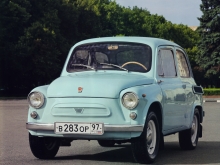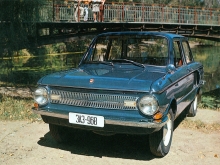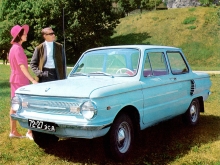ZAZ
Models ZAZ:
Specifications
Video
Private announcements
ZAZ prices (updated April 22, 2016)
| Models ZAZ | Total cars for sale (in the Russian Federation) | Average price, rubles |
The average price of S. Automatic transmission, rubles |
Total for sale with automatic transmission | The average price of S. MCPP, rubles |
Total for sale with manual transmission |
|---|---|---|---|---|---|---|
| Chance | 663 | 271 346 | 418 330 | 35 | 262 561 | 611 |
| Vida Hatchback | 31 | 456 032 | - | 6 | 454 769 | 30 |
| Vida Sedan. | 66 | 447 235 | - | 6 | 447 235 | 63 |
Zaporizhia Automobile Watering Plant (ZAZ)
The enterprise ZAZ is the leader of the modern Ukrainian auto industry. The plant, located in Zaporizhia, provides a full cycle of production - from stamping metal to assembling cars. In 2010, trucks, popular models of passenger cars, buses and components for them were produced at the factory. The products of the enterprise are exported to Syria, Armenia, Russia, Indonesia, Georgia, Egypt, Belarus. The plant in Zaporizhia was founded in 1963 - then agricultural machines were produced on it.
All Caporozhets cars had a number of characteristic features of the design: the backup arrangement with the longitudinal arrangement of the console engine behind the rear axle and the gearbox within the wheelbase; Body of type "Double-door sedan"; V-shaped four-cylinder carburetor air-cooled engine; independent suspension of all wheels; Autonomous gasoline salon heater.
All options for "Zaporozhtsev" were distinguished by the maximum degree of unification in nodes and aggregates with army all-terrain vehicle TPK (the sanitary wheel transporter of the front edge, LUAZ-967). The "civilian" all-terrain vehicles of the LUAZ brand were also treated to the same family - various modifications of LUAZ-969.
In the USSR, the Zaporozhets car was popular for a large extent due to the relative cheapness (for the mid-1970s - about 3-3.5 thousand Soviet rubles; at the same time, "Muscovites" and different models of Zhiguli cost from 5 to 7 , 5 thousand rubles), free (usually) sales without queues and the presence of a variety of modifications with changed control mechanisms for disabled people with missing limbs. Such versions in colloquial speech were often called "disabled" and distributed (sometimes with partial or full payment) through the bodies of social support among the disabled people of various categories. In addition, the "Cossacks" was characterized by good permeability due to a large road lumen, a smooth, smooth bottom, an increased load on the driving axis, a small mass, as well as simplicity in maintenance and repair, which made them largely suitable for service in rural areas and remote areas of the country.




